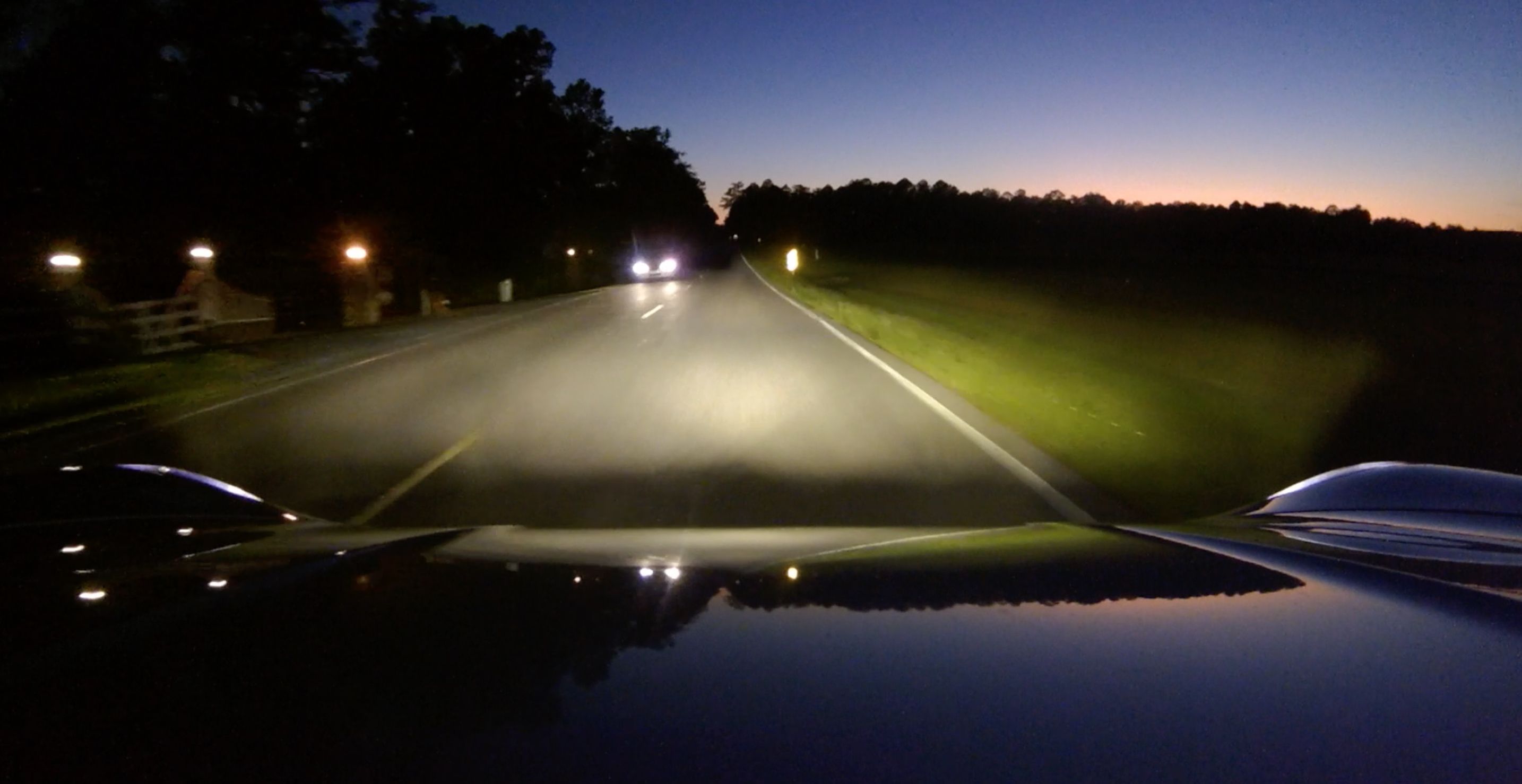Hikari Led Headlight Fundamentals Explained
Table of ContentsOur Hikari Led Headlight DiariesExamine This Report about Hikari Led HeadlightThe Greatest Guide To Hikari Led Headlight


US lawmakers faced pressure to act, due both to lighting efficiency and to automobile aerodynamics/fuel savings. High-beam peak intensity, capped at 140,000 candela per side of the vehicle in Europe, was limited in the United States to 37,500 candela on each side of the vehicle till 1978, when the limit was raised to 75,000.
Since 2010 halogen sealed beams dominate the sealed-beam market, which has declined steeply given that changeable-bulb headlamps were permitted in 1983 - hikari led headlight. High-intensity discharge (HID) systems appeared in the early 1990s, initially in the BMW 7 Series. 1996's Lincoln Mark VIII was an early American effort at HIDs, and was the only automobile with DC HIDs.
Headlamps were round for numerous years, since that is the native shape of a parabolic reflector. Utilizing concepts of reflection, the easy symmetric round reflective surface area projects light and assists focus the beam. European (top) and United States (bottom) headlamp setups on a Citron DS There was no requirement in Europe for headlamps of standardized size or shape, and lamps might be developed in any shape and size, as long as the lamps met the engineering and efficiency requirements contained in the relevant European safety standards.
They were prohibited in the United States where round lights were required till 1975. Another early headlamp styling principle involved standard round lamps faired into the cars and truck's bodywork with aerodynamic glass covers, such as those on the 1961 Jaguar E-Type, and on pre-1967 VW Beetles. Headlight design in the U.S.
In 1940, a consortium of state automobile administrators standardized upon a system of 2 7 in (178 mm) round sealed beam headlamps on all vehiclesthe just system enabled 17 years. However, the Tucker 48 consisted of a defining "cyclops-eye" feature: a 3rd center-mounted headlight linked to the vehicle's guiding mechanism.
A system of four round lights, instead of 2, one high/low and one high-beam 5 34 in (146 mm) sealed beam on each side of the car, was introduced on some 1957 Cadillac, Chrysler, DeSoto, and Nash designs in states that permitted the brand-new system. Separate low and high beam lights got rid of the need for compromise in lens style and filament positioning required in a single system.
The smart Trick of Hikari Led Headlight That Nobody is Talking About
The four-lamp system permitted more design versatility and improved low and high beam efficiency. Car stylists such as Virgil Exner performed style studies with the low beams in their traditional outboard location, and the high beams vertically stacked at the centerline of the automobile, but no such styles reached volume production.
The Nash Ambassador used this plan in the 1957 model year. Pontiac utilized this style starting in the 1963 model year; American Motors, Ford, Cadillac, and Chrysler followed 2 years later on. Likewise in the 1965 model year, the Buick Riviera had actually concealable stacked headlamps. Different Mercedes models offered in America used this arrangement since their home-market replaceable-bulb headlamps were illegal in the United States.
British vehicles consisting of the Gordon-Keeble, Jensen CV8, Triumph Vitesse, and Bentley S3 Continental used such an arrangement too (hikari led headlight). In 1968, the freshly initiated Federal Automobile Safety Requirement 108 required all cars to have either the twin or quad round sealed beam headlamp system, and prohibited any this ornamental or protective aspect in front of an operating headlamp.
This made it hard for vehicles with headlamp setups designed for good aerodynamic performance to achieve it in their US-market configurations. When FMVSS 108 was amended in 1974 to allow rectangle-shaped sealed-beam headlamps, these were positioned in horizontally arrayed or vertically stacked pairs. By 1979, the bulk of brand-new automobiles in the United States market were equipped with rectangular lights. [] As formerly with round lights, the US permitted only two standardized sizes of rectangular sealed-beam light: A system of two 200 by 142 mm (7.
6 in) high/low beam systems corresponding to the existing 7-inch round format, or a system of four 165 by 100 mm (6. 5 by 3. 9 in) units, two high/low and 2 high-beam. representing the existing 5 34 in (146 mm) round format. In 1983, giving a 1981 petition from Ford Motor Company, the United States headlamp policies were changed to permit replaceable-bulb, nonstandard-shape, architectural headlamps with aerodynamic lenses that could for the very first time be made of hard-coated polycarbonate.
These composite headlamps were often described as "Euro" headlamps, because aerodynamic headlamps were common in Europe. Though conceptually similar to European headlamps with non-standardized shape and replaceable-bulb construction, these headlamps adhere to the headlamp style, construction, and performance specs of United States Federal Automobile Safety Requirement 108 instead of the internationalized European safety requirements used outside North America.
Hidden headlamps were introduced in 1936, on the Cable 810/812. They were mounted in the front fenders, which were smooth until the lights were cranked outeach with its own small dash-mounted crankby the operator. They assisted aerodynamics when the headlamps were not in usage, and were amongst the Cable's signature style features.
The Buzz on Hikari Led Headlight
Some covert headlamp styles, such as those on the Saab Sonett III, utilized a lever-operated mechanical linkage to raise the headlamps into position. During go to this website the 1960s and 1970s lots of significant sports cars and trucks utilized this function such as the Chevrolet Corvette (C3), Ferrari Berlinetta Fighter and Lamborghini Countach as they permitted low bonnet lines but raised the lights to the required height, but Full Article because 2004 no modern volume-produced vehicle designs use concealed headlamps, since they present troubles in abiding by pedestrian-protection arrangements added to global vehicle security policies regarding protuberances on car bodies to minimize injury to pedestrians struck by cars.